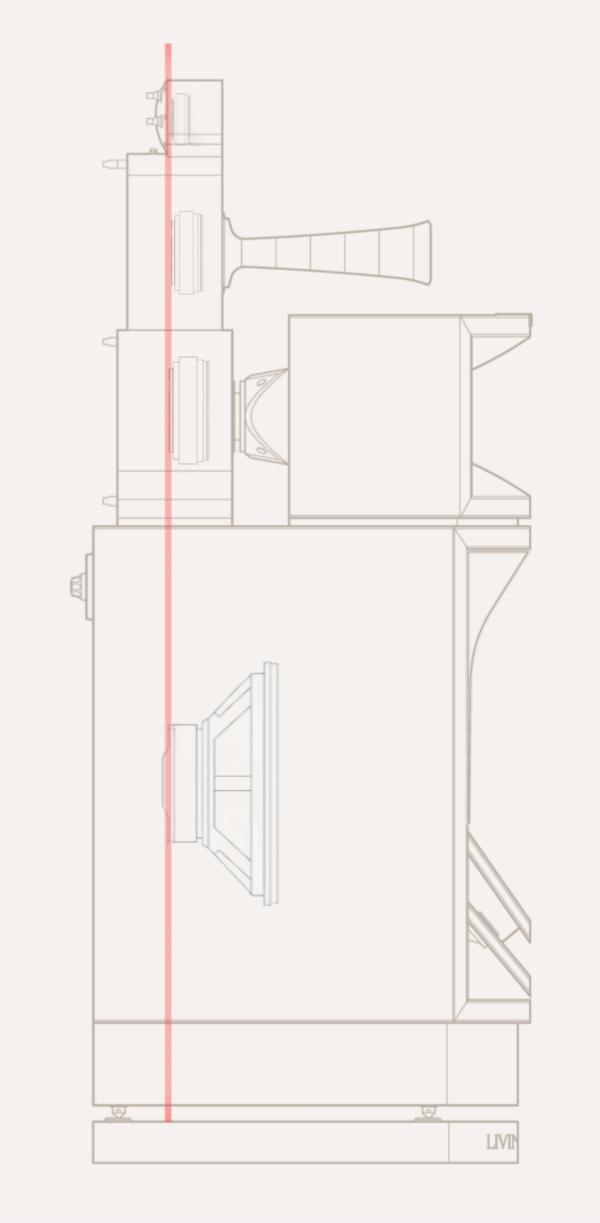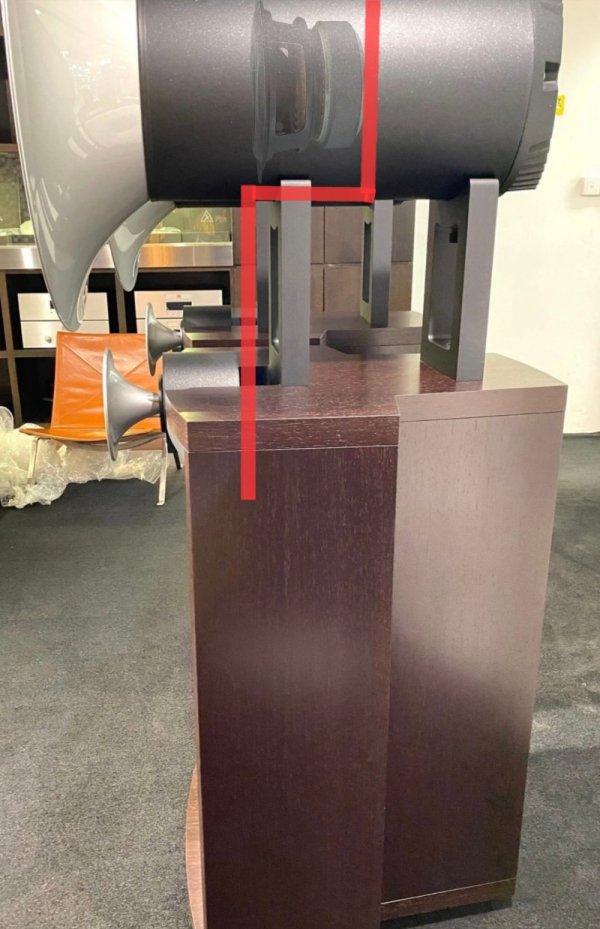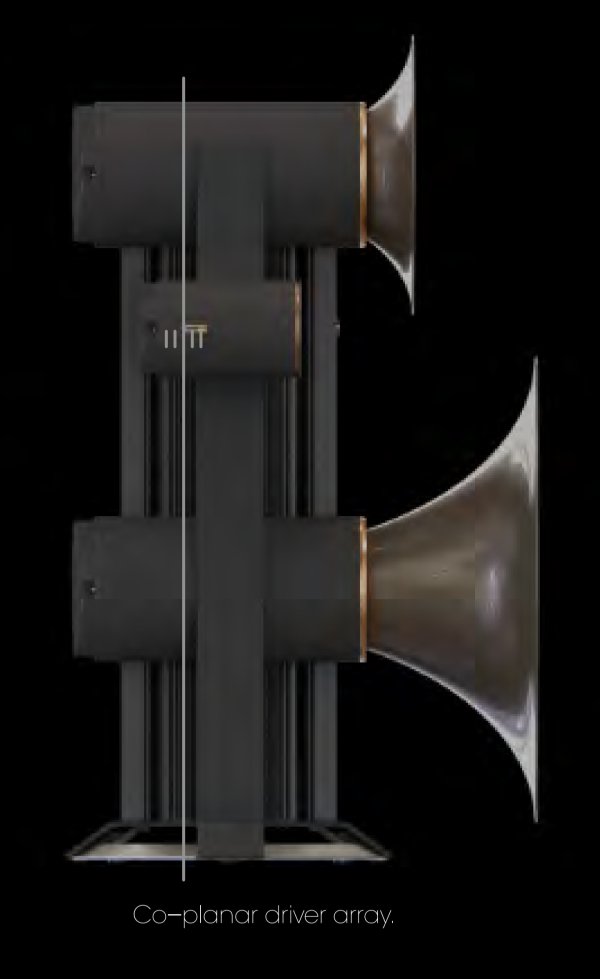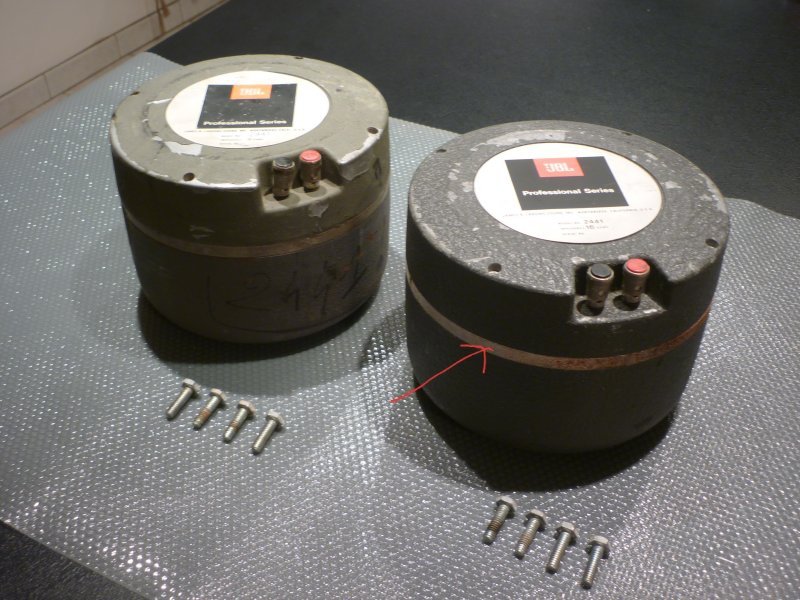Deliberate misinterpretation here by some…?I think Ron is trying to say some systems favor certain recordings more so than others , not that it was designed intentionally to do so …!
What are the Top Horn Speakers in the World Today? Vox Olympian vs Avantgarde Trio vs ???
- Thread starter caesar
- Start date
You are using an out of date browser. It may not display this or other websites correctly.
You should upgrade or use an alternative browser.
You should upgrade or use an alternative browser.
Read Ralph’s declaration that topology doesn’t really matter…Transfer Function much ..?
The Vox Olympian is a 4-way horn-loaded satellite: midbass horn, midrange horn, high-frequency horn, and a super tweeter horn. When paired with the optional Vox Elysian sub-bass units (each with dual 12" drivers front-loaded by a 4.6 m folded exponential horn), the system becomes effectively a 5-way all-horn design. By contrast, the Trio G3 is a 3-way horn satellite, with optional bass modules that can be horn-loaded (Basshorns/SpaceHorns) or conventional (Sub 231). The claim that the Olympian has “only two horn-loaded ways” is incorrect, and it’s equally misleading to imply the Trio always uses “conventional” bass , it depends entirely on the bass module selected.
Would you opine that the Vox Olympian transducer array is *Physically* time aligned in respect of its component drivers ?
I have Vox Olympians in my Bidet room Al … Quite wonderful !And also these humungous speaker systems will fit into very few listening spaces.
Last edited:
It sounds beautifully musical, but unfortunately, you can tell that the tubes or output transformers are at their limit. It lacks power and bass. Mahler is a brute force, but unfortunately, that doesn't come across, which is where dynamic headroom comes into play.
Exsampe 97db/ 1watt speaker with 300watt amps
This is playing the same vinyl with class D 500 hz downwards on 2 15 inch woofers per speaker
The first video has considerably better dynamics on that climax (around 2 min there) than your video, Ked (same climax, around 1 min). The former builds and builds in the climax, yours stagnates and then collapses in the climax.
If you want to convince us that horn speakers have such great dynamics you should post better sounding videos. Oh, I forgot, your video doesn't feature a horn speaker, but a horn-hybrid. Never mind.
And BTW, the tonality of your video is bleached and anemic. The first video has much more color and balls. Mahler has balls.
***
(Not that I am particularly a fan of the colors in the first video either, but hey, its all relative and it's just a video. For a video it's pretty good.)
Last edited:
AFAIK it takes special phase processing, similar to what was used in Amused to Death, to cause images to project in front of the plane of the speakers if the room and system is set up properly.
My corner horns actually project images in front of the plane of my speakers, although they are a special case. There is also imaging behind the front wall. It’s a pretty unique presentation that took some getting used to when I first heard the speakers demonstrated. The speakers completely disappear from the room.
I am fascinated by your thoughts here. Few have heard the AG Trio and few have heard the Olympian…hearing both even fewer. I have heard the AG Trio G3 but never the Vox Olympian. I genuinely was very impressed. Would appreciate knowing a bit more details about how for you the Vox Olympian plays in a different league. Thanks for any listening notes!I’d like to return to the original question at this point. The Vox Olympian is essentially a 4- or 5-way loudspeaker, with only two of those five ways being horn-loaded. By contrast, the Trio GT and its predecessors are 3-way designs, with bass reproduction handled in a more conventional manner.
From a purely sonic perspective, however, I personally find the Vox Olympian to play in an entirely different league. I have listened to it on several occasions at a friend’s place, including with the optional bass extension.
That said, when opening a thread with such a rather superficial and provocative question, it would actually be helpful to first clarify what should properly be considered a horn loudspeaker in the first place. Shouldn’t all ten octaves ideally be horn-loaded? Or is it sufficient if only four out of ten, or perhaps five out of ten, are?
Best regards,
S
Thank you. But actually, I'm not trying to say that. I said in Post # 1,020 exactly what I intended to say:I think Ron is trying to say some systems favor certain recordings more so than others , not that it was designed intentionally to do so …!
I believe that different speaker topologies are more or less convincing at reproducing different kinds of music.
As is evident from the arrangement of the driver units, the horns (midbass, mid, HF, super tweeter) are stepped and angled so that the acoustic centers align as closely as possible on the listening axis. Kevin Scott employs low-order networks, typically first-order slopes (6 dB/octave), in the Vox Olympian. Combining physical time alignment (horn geometry) with a first-order electrical crossover results in an output that is impressively close to phase coherence.Would you opine that the Vox Olympian transducer array is *Physically* time aligned in respect of its component drivers ?

The horns from Living Voice, Avantgarde (G3 series), Aries Cerat, Cessaro, and Sadurni are all physically time-aligned.
In the previous generation of AG horns, there was a clear lack of physical alignment, as the tweeter sat roughly 20 cm forward of the midrange acoustic center. In the new G3 generation, this offset has been corrected.


This is a significant problem.Yes, all those I visited had no clue on how to set them up
I have seldom head a Wilson speaker sound like something I would be interested in purchasing. I could say the same about other manufactures so not picking on them in particular. With the Wilson my experience would be at shows like Munich but also at a friend's house so I am willing to believe they can be better with proper set up and equipment. Still if you are unable to establish a proper environment, set up and appropriate components for these expensive speakers why would you purchase them?
This is a significant problem.
I have seldom head a Wilson speaker sound like something I would be interested in purchasing. I could say the same about other manufactures so not picking on them in particular. With the Wilson my experience would be at shows like Munich but also at a friend's house so I am willing to believe they can be better with proper set up and equipment. Still if you are unable to establish a proper environment, set up and appropriate components for these expensive speakers why would you purchase them?
Because people don't know what they're missing without proper setup. They're happy, but don't know what their speakers really can do. Ignorance is bliss, I guess.
Interesting info.
So why then should people go for the alleged dynamics of horn speakers when most "horn speakers" are not even horn speakers? Shouldn't only real horn speakers qualify for even the suggestion? But those take a good amount of space, obviously.
My speakers are fully horn loaded but only go to mid 30s Hz. They are big but fit tightly into the corners, so they do not take up much space.
Physical time alignment has to do with the mouth of the horn and not the placement of the drivers. They should also be able to move to align with the seating position of the listener. As far I know, only Cessero’s top speakers have this feature. Romy the Cat’s speakers and his website have extensive posts on this subject.As is evident from the arrangement of the driver units, the horns (midbass, mid, HF, super tweeter) are stepped and angled so that the acoustic centers align as closely as possible on the listening axis. Kevin Scott employs low-order networks, typically first-order slopes (6 dB/octave), in the Vox Olympian. Combining physical time alignment (horn geometry) with a first-order electrical crossover results in an output that is impressively close to phase coherence.
View attachment 157545
The horns from Living Voice, Avantgarde (G3 series), Aries Cerat, Cessaro, and Sadurni are all physically time-aligned.
In the previous generation of AG horns, there was a clear lack of physical alignment, as the tweeter sat roughly 20 cm forward of the midrange acoustic center. In the new G3 generation, this offset has been corrected.
View attachment 157546
View attachment 157548
It’s not just about the horn mouth. Time alignment depends both on horn length and the acoustic centers of the drivers. For example, in the new AG Duo the tweeter horn was made about 20 cm longer so the mid and tweeter align acoustically. From the front you can still see the mid horn mouth extending further forward than the tweeter horn, and that’s intentional, if the tweeter horn mouth were pulled forward to be flush, time alignment would actually be lost. That shows why stepped/angled geometry matters. Cessaro’s top models do it with movable horns, but LV, AG G3, AC and Sadurni achieve alignment either through carefully calculated fixed geometry or, in some models, with adjustable tweeter and super tweeter horns.Physical time alignment has to do with the mouth of the horn and not the placement of the drivers. They should also be able to move to align with the seating position of the listener. As far I know, only Cessero’s top speakers have this feature. Romy the Cat’s speakers and his website have extensive posts on this subject.
How interesting, the AG Duo is also horn-loaded from around 170 Hz upwards. This could be good news for Bonzo.nearly 80% of the total musical energy is concentrated within less than 2.3 octaves, specifically between 170 Hz and 680 Hz.
Agree. A speaker with just a horn tweeter is not really a horn speaker.Exactly, Kedar.
Around six years ago, we conducted precisely 1,000 frequency response measurements across ten different musical genres. Importantly, we did not use synthetic test signals such as pink noise, but only real music – including classical, jazz, rap/hip-hop, R&B, electronic, metal, a cappella, and so on. For each genre, 100 frequency response measurements were taken, and the results were absolutely conclusive: nearly 80% of the total musical energy is concentrated within less than 2.3 octaves, specifically between 170 Hz and 680 Hz.
To be honest, this makes it rather difficult for me to regard a loudspeaker as a true horn speaker if it only becomes fully horn-loaded at 700 Hz, or even not until above 1,000 Hz.
Best Regards S
Agreed, with large multi-way horn systems you won’t nail perfect alignment by eye. Physical geometry gets you close, but the precise alignment is finished with microphone-based impulse measurements. The silver timing stripe on some JBL/TAD compression drivers is a useful mechanical reference, yet because the acoustic center shifts with horn loading it can only take you so far. You still need the mic to dial in the last few millimeters. The best practice is mechanical alignment first, and then finalizing the tiniest delays with microphone measurements.With large multi-way horn systems, you won't be able to achieve this without proper impulse measurement. you can align physically but not perfect. For example, JBL/TAD..etc had a silver line on its compression driver for time alignment, which is obviously helpful.View attachment 157550
For example, in its brochures and documentation Avantgarde clearly states that the G3 design is the result of CAD simulation combined with acoustic measurement. In other words, they first got close through geometric modeling (CAD design), and then fine-tuned the alignment precisely with microphone and impulse measurements. It was by no means done ‘by eye’ only, since the millimeter-level accuracy required simply cannot be achieved visually.
I was being sarcastic in my response to Amir, who seemed to imply that all Wilsons (probably heard 15 or more outside shows, including 6 Alexandrias and one XVX, with spectral, VTL, dartzeel, dagostino, Lamm..) were all bad and many were experts at setups. There is just so much you can do with such components.This is a significant problem.
I have seldom head a Wilson speaker sound like something I would be interested in purchasing.
Even small time DIY people do a lot of modelling, they start with hornresp, then go to CAD when they are dreaming big, and use measurement techniques. There are extremely few who get it to sound anywhere good. If you find one, you should offer him for his finished product or copy him exact and pay him to come over and finish final tuning after install.For example, in its brochures and documentation Avantgarde clearly states that the G3 design is the result of CAD simulation combined with acoustic measurement. In other words, they first got close through geometric modeling (CAD design), and then fine-tuned the alignment precisely with microphone and impulse measurements. It was by no means done ‘by eye’ only, since the millimeter-level accuracy required simply cannot be achieved visually.
Similar threads
- Replies
- 42
- Views
- 7K
- Replies
- 228
- Views
- 11K
- Replies
- 5
- Views
- 5K
- Replies
- 29
- Views
- 8K
| Steve Williams Site Founder | Site Owner | Administrator | Ron Resnick Site Owner | Administrator | Julian (The Fixer) Website Build | Marketing Managersing |















